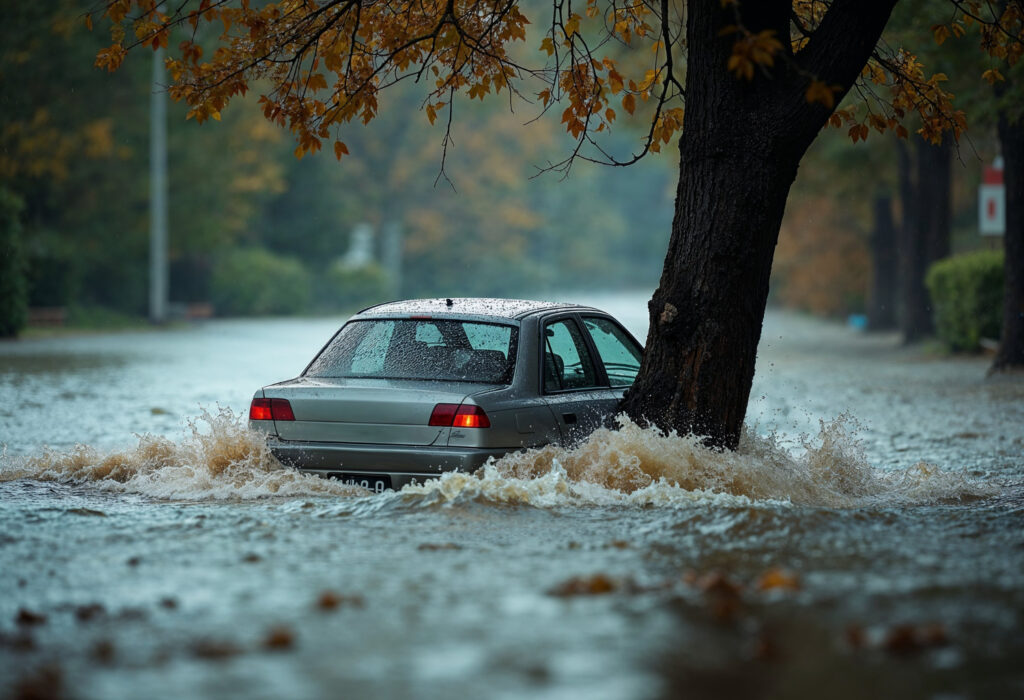Flood insurance owning rental properties is a significant investment for many individuals, offering a steady source of income. However, with this lucrative opportunity comes a set of risks—one of the most devastating being flooding.
Whether it’s due to heavy rain, storms, or rising sea levels, floods can cause extensive damage to properties, putting both the owners and tenants at considerable risk. While standard property insurance may cover some damages, it often excludes flooding.
That’s where insurance becomes a crucial safeguard, especially for rental properties.
The Need for Flood Insurance in Rental Properties
When it comes to rental properties, owners are responsible for maintaining the property’s condition and ensuring the safety of their tenants. Natural disasters, such as floods, can occur unexpectedly, and the damage they leave behind can be catastrophic.
From eroding foundations to damaged electrical systems, flood damage is not only expensive but can also render the property uninhabitable for an extended period.
Unlike many other types of property insurance, flood insurance is often a separate policy. While renters may have their own renters’ insurance for personal belongings, property owners must secure additional coverage to protect the physical structure of the building.
This specialized protection ensures that should a flood occur, the owner will not bear the full financial burden.
The Limits of Traditional Property Insurance
Most standard property insurance policies, including homeowners’ and rental property insurance, do not cover flood damage. These policies typically protect against fire, vandalism, theft, and other perils, but when it comes to floods, they fall short.
Without flood insurance, landlords could face significant repair costs that may exceed their financial resources.
Worse still, the absence of proper coverage could jeopardize the long-term viability of the rental property business, forcing owners to shoulder repair bills or face lawsuits from tenants whose homes were rendered uninhabitable.
How Flood Insurance Works

Flood insurance provides protection for property owners against financial losses caused by floods. The policy typically covers both the structure of the building and its contents.
In the case of a rental property, the owner would be responsible for insuring the physical structure, while tenants would be advised to secure separate renters’ insurance for their personal belongings.
The coverage provided by flood insurance depends on various factors, such as the location of the property, the risk of flooding in that area, and the type of coverage selected.
For example, there are two main types of coverage:
Building Coverage: This covers the physical structure of the property, including the foundation, walls, and flooring. It also typically covers electrical and plumbing systems, appliances, and built-in furniture.
Contents Coverage: This protects the personal property of tenants, including furniture, electronics, and clothing, in case of flooding. However, it’s important to note that tenants must acquire separate renters’ insurance to protect their possessions.
The flood insurance policy also typically includes a deductible, which is the amount the policyholder must pay out-of-pocket before the insurance coverage kicks in.
The higher the deductible, the lower the annual premium, but the policyholder would be responsible for more in the event of a claim.
Benefits of Flood Insurance for Rental Properties
1. Protection Against High Costs
The most obvious benefit of flood insurance is its ability to protect rental property owners from the enormous financial strain that flood damage can impose. The repair costs following a flood are often exorbitant, including expenses for water extraction, mold remediation, and structural repairs.
Without adequate coverage, landlords may find themselves in a position where they must pay for repairs out of pocket, leading to severe financial setbacks.
2. Mitigating the Risk of Rent Loss
When a rental property is damaged by a flood, it may become uninhabitable for weeks, months, or even longer. This can result in a loss of rental income for the property owner.
Even if the tenants are temporarily displaced, the landlord could still be required to maintain their obligations under the lease, including making necessary repairs.
3. Reducing Liability Exposure Of Flood Insurance
In the aftermath of a flood, tenants may seek compensation for their losses. If they lose personal belongings due to floodwaters, they may file lawsuits against the property owner.
While flood insurance generally does not cover tenants’ personal property, it can still help reduce liability exposure.
4. Compliance with Mortgage Requirements
In some cases, lenders may require property owners to have insurance as a condition of their mortgage agreement, particularly if the property is located in a high-risk flood zone. If a flood damages a property in such areas, the lender could be at risk of losing their investment.
In cases where the property is not located in a floodplain but is still vulnerable to flooding, having the right insurance coverage ensures that the property owner is not financially exposed.
5. Increased Property Value and Marketability
For rental property owners looking to sell or rent out their property, offering flood insurance or providing proof of coverage can increase the property’s marketability.
Many prospective tenants or buyers prioritize safety and peace of mind, especially when considering properties located in areas prone to flooding.

6. Peace of Mind for Landlords and Tenants
For rental property owners, having insurance provides a sense of security, knowing that they are protected against one of the most common and destructive natural disasters.
Tenants, too, benefit from the peace of mind that comes with living in a property where the owner has taken proactive steps to protect the building from flood damage.
7. Coverage for Rebuilding Efforts
In the unfortunate event that a property sustains severe flood damage, insurance ensures that the property owner has the financial support necessary to rebuild.
This coverage includes costs for structural repairs and may also provide funds for elevating the property to meet updated flood mitigation standards.
The Cost of Flood Insurance for Rental Properties
Generally, rental properties in flood-prone areas will have higher premiums, as the risk of flooding is greater. However, not having coverage in the event of a flood can lead to a significant financial burden, while the cost of insurance is often small in comparison.
To determine the exact cost, insurance providers will assess the property’s flood zone designation, historical flooding data, the building’s construction and elevation, and other risk factors.
In areas designated as high-risk flood zones by the Federal Emergency Management Agency (FEMA), insurance premiums are typically higher, but the protection provided far outweighs the cost.
Conclusion:
Flooding is an unpredictable and devastating natural disaster that can cause extensive damage to rental properties, threatening the financial well-being of property owners. Flood insurance provides crucial protection, ensuring that landlords are not left to shoulder the financial burden of flood damage.
From covering repair costs to mitigating rental income losses, this type of insurance is an essential tool for protecting rental property investments.
In addition to its financial protection, insurance helps reduce liability risks, ensures compliance with mortgage requirements, and even enhances the marketability of rental properties.


